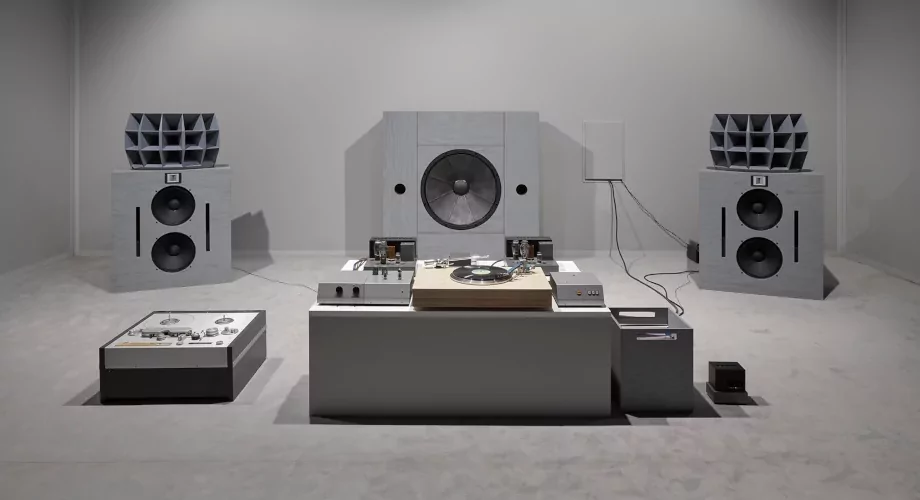Published on
October 25, 2017
Category
Features
Having recommended a range of speakers and amplifiers for every turntable set-up, we asked The Ear editor Jason Kennedy to share a few essential tips on how to match them.
Assembling a separates-based sound system is essentially a case of getting a turntable (or CD player/computer & DAC etc), an amplifier, and a pair of speakers, and hooking them up with suitable cables. It’s not rocket science, but it pays to consider how well the various parts match with one another, especially when it comes to amp and speakers.
While most amps and speakers operate on the same principles, when a manufacturer develops an amp or a speaker they make decisions about how it sounds based on the partnering equipment they use. For instance, an amp maker might always use a certain type of speaker in his or her evaluation work, and thus end up with an amp that works best with that type of speaker. Bigger brands try to make products that are even-handed, and won’t sound too different regardless of what they are partnered with, but there is always an interaction between the amp and the speaker, because the former has to drive and control the latter.
Power
It would be easy to match amps and speakers if all you had to do was pick an amp with the same power rating as a given loudspeaker, but sadly it’s not that simple. This is because power ratings for speakers are an indication of the minimum and maximum power a speaker requires. However, as a general rule you can never have too much power; more power means more control, which in turn means less distortion.
A low powered amp played too loudly can damage a loudspeaker, whereas a high powered one will give you higher volume levels without danger because it isn’t struggling with the so-called load. It’s possible to damage a speaker by playing it at high levels for too long even if the amp can cope, but you’ll be able to hear that all is not well before things go pear shaped. So all things being equal, more power is a good thing.
Sensitivity & impedance
The key figure with speakers is sensitivity (or efficiency), as this indicates how much volume you get for each Watt of power that you send to them. As a general rule, the higher the sensitivity the less power you need to produce a given volume level. Big horn loudspeakers are extremely efficient and can be run on less than 10 Watts, while regular speakers need considerably more power. An average sensitivity is around 87dB (decibels), and requires an amp with 60 Watts or more to drive it.
Inconveniently, sensitivity is not the only important specification; the other one is impedance. Most sensitivity figures are quoted for an 8 Ohm impedance, but it’s not uncommon to find them given for half of that; 4 Ohms. In effect this means that the speaker is 3dB less efficient than one with the same sensitivity and an 8 Ohm load.
Most modern amplifiers can drive an 87dB/4 Ohm loudspeaker without difficulty, but if you want high volume levels without distortion, you will need a more powerful amp than you do with an 8 Ohm speaker.
Balance
Fortunately most of the more affordable amps and speakers on the market can work together from a power, sensitivity and impedance point of view, and it’s only when you get into the high-end that things get more tricky. What does affect mass market combinations is tonal balance. Some amplifiers sound brighter and less fulsome than others, and if you combine these with a speaker that has similar characteristics, you can end up with a thin sound.
Likewise, if you put a big speaker with a powerful amp into a room that’s not very big, you can end up with too much bass. This is why it pays to listen to the combination of amp and speaker in a room of similar size to your own before buying. The room/speaker balance is another topic of course, but as a rule avoid putting big speakers in small rooms unless you (and your neighbours) like it boombastic.
Happy couples
Because people have been making amps and speakers for decades, some particularly happy pairings have been identified and are regularly recommended by dealers and press alike. Naim amplifiers for instance seem to work well with speakers from brands including PMC, Neat and Kudos. Rega amps inevitably work well with Rega speakers but are also good with PMC, while Arcam and NAD amps have good synergy with Bowers & Wilkins speakers.
The safe option is to go for an amp and speakers from the same brand, but that limits your choices to an extent. There are also some brands that are owned and developed by associated companies, for instance Naim Audio is a sister company of Focal, while Bowers & Wilkins is in the same group as Rotel. Quad is part of large group that includes Mission, Audiolab and Wharfedale. This doesn’t guarantee synergy, as the two brands may be based in different parts of the world, but it’s a start.
Quality
This is really another aspect of balance, but not a tonal one. If you have a great amplifier then it makes sense to have speakers of the same quality. Put a really revealing speaker with a cheap amp, and you will hear the shortcomings of the amp, and not get the best out of the speaker. If you need to upgrade one step at a time, start with the source (turntable, CD player etc), then the amp, and finally the speakers. That way you will end up with a system that sounds good all the way through the process.





